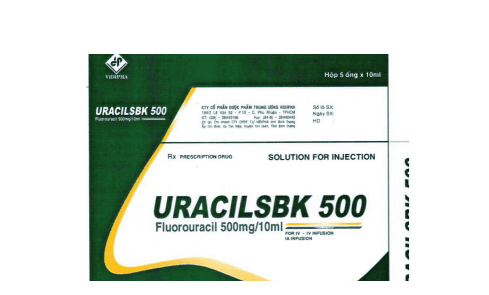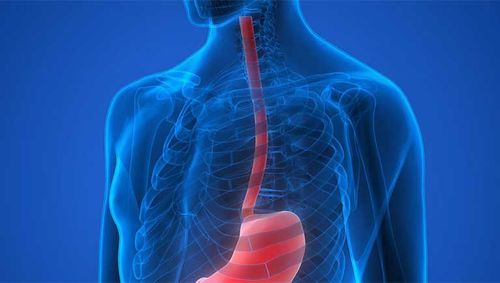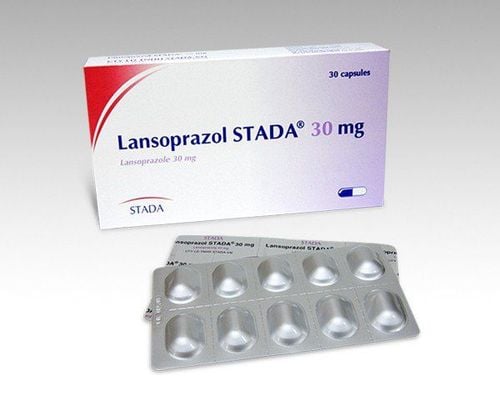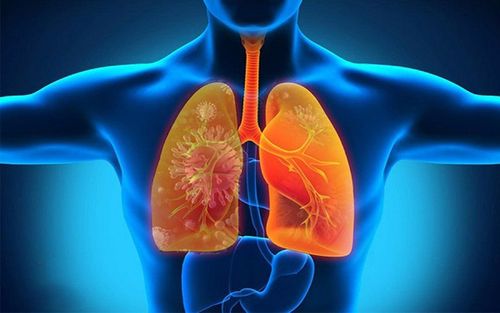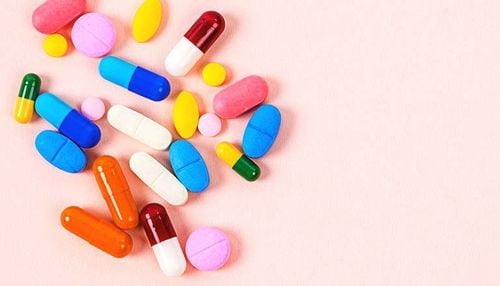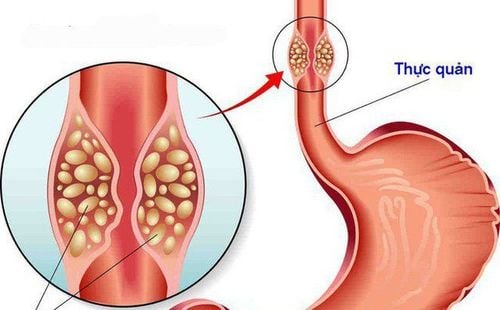This is an automatically translated article.
Esophageal resection surgery will lose an important part of the digestive system, so the patient adheres to eating through the stomach tube and some other notes to quickly recover health.1. Eating through gastric tube after esophagectomy
Gastric tube is used as a measure to support patients eating after esophagectomy.The gastric tube will be connected to an infusion machine or electric pump that holds food. The rate of feeding will be adjusted gradually, depending on the degree of recovery and reactions such as nausea, vomiting, discomfort of the patient.
Initially, the food will be fed continuously at a slow rate. After that, increase to a cycle from 3 pm to 9 am (18 hours), then from 9 pm to 9 am (12 pm).
Patients need to follow the eating plan through the tube until the doctor assesses that they are able to eat and drink on their own to provide enough nutrients for the body after esophagectomy. Depending on the progress of the recovery, the patient may have the tube removed after about 2 weeks.
When eating through the tube, the patient may have diarrhea, stomach cramps for a few days. This is due to changes in the shape of the stomach from surgery and from the feeding tube. If the above symptoms are present, the patient should notify the doctor to change the type of tube or the appropriate amount of feeding.
2. Common eating problems after esophagectomy
Feeling full after eating: Patients should eat 6-8 small meals a day, chew food thoroughly, limit drinking water while eating. Gastroesophageal reflux: You need to avoid caffeine, carbonated drinks, alcohol, citrus, tomatoes, spicy foods, fried foods. Limit drinking through a straw, chewing gum or smoking. Do not eat or drink 2 hours before going to bed. Difficulty swallowing: Take soft, moist foods. Avoid sticky foods like bananas and doughy bread. If choking occurs frequently, tell your doctor. You also need to pay attention to sit up straight when eating and after eating for 30 - 60 minutes to remove stomach acid. Dumping syndrome: This is a phenomenon in which the stomach empties quickly when food, especially sugar, moves too quickly from the stomach to the small intestine. It can cause diarrhea, cramps, nausea, dizziness, bloating, and mild headaches. In this case, the patient should limit fluid intake during meals, limit sweets at the end of meals, and avoid foods that are too cold or too hot.
Sau khi cắt thực quản bạn có thể bị khó nuốt
3. Diet after esophagectomy
3.1. Clear Diet This will be the first diet after esophagectomy. This diet applies to transparent, see-through dishes, including some typical dishes such as:Clear juices (apple, cranberry, non-citrus); Clear broth (chicken, beef and vegetables); Gelatin (such as Jell-O®); Tea (decaf to avoid reflux). Carbonated drinks are not allowed because they can cause bloating, reflux.
3.2. Diet full of fluids Along with liquids in the clear liquid diet, you can also eat a combination of foods such as:
Yogurt (no fruit or nuts); Cream of wheat or cream of hot rice cereal; Cream; Milk; Pudding; Liquid nutritional supplements such as Ensure®, Carnation Instant Breakfast® or Boost®. Note: With dairy products, the person may be lactose intolerant at first (can't digest milk sugar). Therefore, add a small amount of milk to your diet to see if it is tolerated or try lactose-free milk-Lactaid®.
Example of a full liquid diet:
Breakfast:
Apple juice (4 ounces); Cream of Wheat Cereal Made with Milk or Lactaid®. Snack:
Carnation Instant Breakfast® Drink (4 ounces). Lunch:
Creamy soup (stretch), not tomato or broccoli. Cranberry juice. Snack:
Boost® Nutritional Supplement (4 ounces). Dinner:
Creamy soup (stretch) not tomato or broccoli; Vanilla pudding. Snack:
Sherbet. 3.3. Soft diet This diet should consist of pale, soft foods. Patients should cut tough meats into small pieces and add sauces or gravy to foods.
| Nhóm thực phẩm | Chọn | Tránh |
| Bánh mì/ Ngũ cốc |
• Bánh mì nướng kiểu Pháp • Bánh quy giòn • Bánh mì nướng |
• Bánh mì mềm, bánh mì cuộn, bánh mì tròn, bánh mì có chứa các loại hạt, trái cây tươi hoặc khô • Bánh cuộn ngọt, bánh cà phê và bánh rán |
| Ngũ cốc |
• Ngũ cốc khô không đường • Ngũ cốc nấu chín |
• Ngũ cốc thô như Grape Nuts® và granola • Bất kỳ loại ngũ cốc nào với trái cây tươi hoặc khô, hoặc hạt |
| Đồ uống |
• Sữa thông thường • Trà khử caffein • Hỗn hợp đồ uống dạng bột •Nước trái cây không có múi như táo, nam việt quất, nho hoặc hỗn hợp |
• Sữa sô cô la • Soda (đồ uống có ga) • Đồ uống có cồn • Nước trái cây có múi như nước cam, nước bưởi, chanh • Đồ uống có thành phần thảo dược như St John’s Wort hoặc nhân sâm • Đồ uống có caffein: cà phê, trà, cà phê có caffein |
| Thịt |
• Thịt nạc xay mịn, thịt bò, thịt cừu, thịt lợn, thịt bê, cá và gia cầm (không chiên) • Trứng (không chiên) • Phô mai cottage và ricotta • Phô mai nhẹ như American, baby Swiss, hoặc Mozzarella • Sữa chua nguyên chất hoặc có hương vị • Đậu phụ và các sản phẩm từ đậu nành • Bơ đậu phộng mịn • Món thịt hầm |
• Thịt dai có gân • Nhiều gia vị, hun khói hoặc béo thịt / cá / gia cầm như xúc xích, thịt nguội, thịt xông khói, thịt ngan, ngỗng, vịt, ức bò • Ớt và các thức ăn cay khác • Phô mai có hương vị mạnh như sharp cheddar và có chứa ớt hoặc các loại gia vị khác • Bơ đậu phộng giòn • Sữa chua có chứa các loại hạt |
| Khoai tây và tinh bột |
• Khoai tây vỏ trắng hoặc ngọt • Gạo trắng và lúa mạch • Mì ống |
• Khoai tây chiên, vỏ khoai tây • Cơm chiên, gạo lứt • Bắp rang bơ |
| Trái cây |
• Trái cây đóng hộp • Trái cây nấu chín (không bỏ vỏ) • Nước ép trái cây, ngoại trừ cam quýt |
• Trái cây tươi hoặc khô • Trái cây và nước trái cây họ cam quýt (cam, bưởi, chanh, chanh) |
| Rau |
• Rau nấu chín không có hạt hoặc vỏ như măng tây, đậu Hà Lan, cà rốt, đậu xanh và bí mùa đông. |
• Rau sống • Cà chua, nước ép cà chua, nước sốt cà chua hoặc xay nhuyễn • Các loại rau tạo khí như bông cải xanh, cải Brussels, bắp cải, súp lơ, ngô, dưa chuột, ớt, hành tây, củ cải, dưa cải • Đậu Hà Lan và đậu lăng khô |
| Súp |
• Súp thịt thanh nhẹ • Súp kem |
• Súp đậm đà và súp nấu từ cà chua |
| Món tráng miệng |
• Bánh ngọt, bánh quy, bánh pudding, custard, kem, sữa đá, sữa chua đông lạnh và rượu sherbet. • Gelatins, kem que |
|
|
Kẹo Ăn ít và cùng với bữa ăn. Lưu ý: Người mắc hội chứng Pumping không nên ăn kẹo. |
• Đường, xi-rô, mật ong, thạch, và mứt không hạt. • Kẹo mềm • Mật đường • Bánh nướng chảo, bánh quy, bánh pudding, custard, kem, sữa đá, sữa chua đông lạnh, sherbet, ice fruit, và kem que. |
• Mứt và mứt cam chứa hạt hoặc trái cây • Kẹo sô cô la • Món tráng miệng có sô cô la, quả hạch, dừa, hạt, bạc hà • Trái cây khô hoặc tươi |
Canned fruit; Hot/cold cereal (1⁄2 cups); 1 slice of toast; Margarine (1 teaspoon); Milk (1/2 cup). Mid-morning snack:
Yogurt mix (1/2 cup). Lunch:
Meatloaf; Mashed potatoes (1/2 cup); Low-fat gravy; Canned peaches (1/2 cup); Milk (1/2 cup). Afternoon Snack:
Grilled Chicken (2 ounces); 4-6 salty crackers; Fruit juice (1/2 cup). Dinner:
Roast chicken (ground) 3 ounces; Baked potatoes (small); Margarine (2-3 teaspoons); Cooked carrots (1/2 cup); Canned pears (1⁄2 cups); Milk (1/2 cup). Bedtime snack:
Cheese sticks (1/2 cup); Canned peaches (1/2 cup); Fruit juice (1/2 cup). The above is a diet after esophagectomy that patients can refer to and apply to help the recovery process take place faster. In addition, to ensure the safety of the surgical process, patients need to choose a reputable and quality medical address with a team of highly qualified and experienced doctors. Currently, Vinmec International General Hospital is one of the most prestigious medical units in Vietnam. Performing esophagectomy at Vinmec, patients will receive:
Examination and treatment by a team of highly qualified and experienced specialists: Doctors with qualifications from Master to Professor, Doctor , has a reputation in medical and surgical treatment, is highly trained domestically & abroad. State-of-the-art equipment, comparable to major hospitals in the world: The most modern operating room in the world; The most modern silent magnetic resonance imaging machine in Southeast Asia; 16-sequence PET/CT and SPECT/CT systems help detect early lesions in the esophagus even when there are no symptoms of the disease. Application of the most advanced advanced techniques in the world in surgical treatment of diseases.
Please dial HOTLINE for more information or register for an appointment HERE. Download MyVinmec app to make appointments faster and to manage your bookings easily.
Reference source: uwhealth.org



